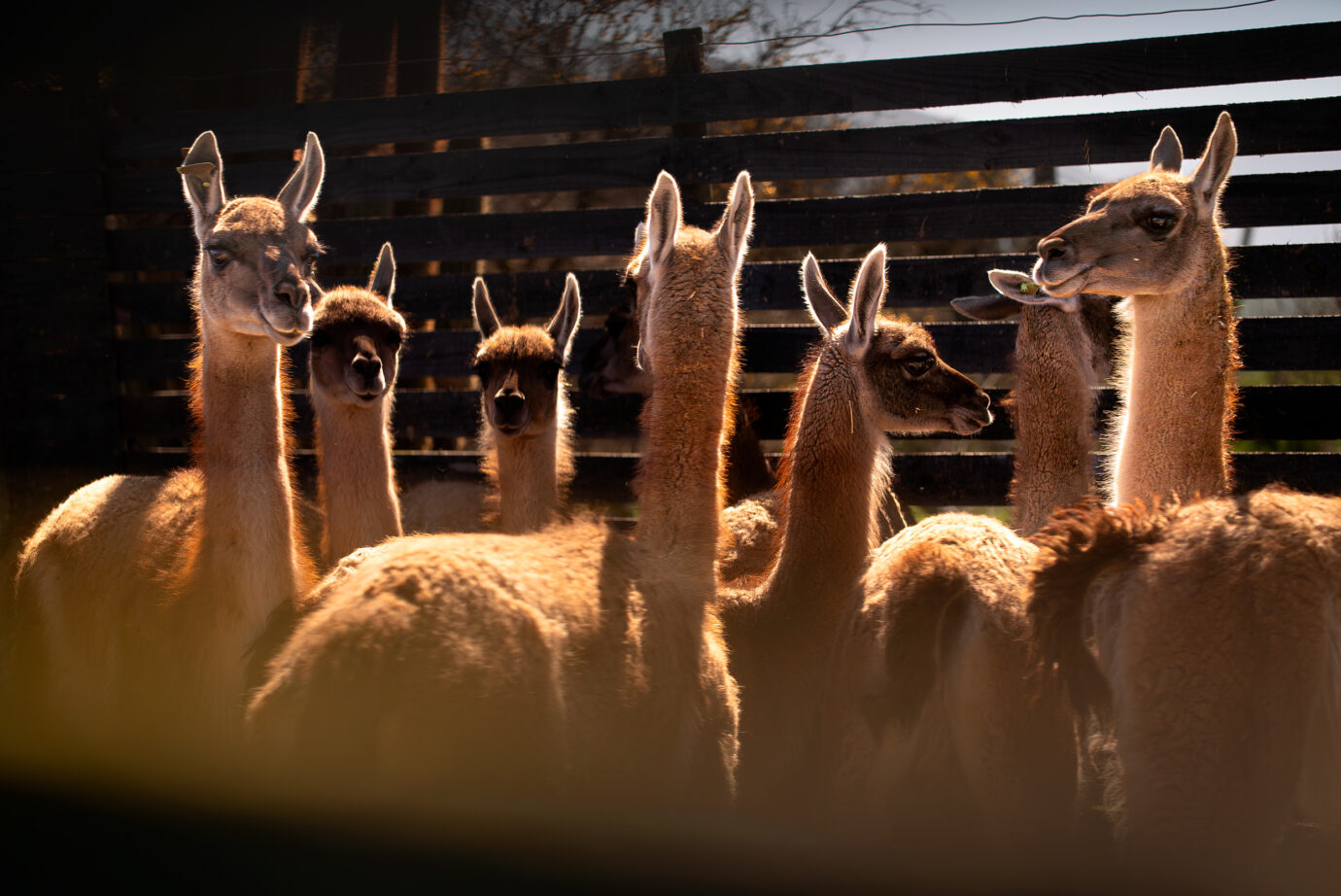
Foto: Franco Davico para Rewilding Chile
The relocation of 16 guanacos to breeding centers in three nature sanctuaries in the Metropolitan Region of Chile, will invigorate a program to breed guanacos for release in Chile’s Central Andes. The effort relies on public-private collaboration to restore ecosystems at scale, promote nature-based tourism, and improve knowledge of this species and its threats in Chile’s most populous region.

Foto: Franco Davico para Rewilding Chile
The guanaco, the largest terrestrial mammal in Chile, once numbered in the tens of millions in South America. Today, only 300 of these iconic camelids remain in the wild in Chile’s Central Andes. This month, a diverse coalition took a big step toward recovering this herbivore with an important ecological role in maintaining the health of grasslands.
Sixteen guanacos from a private estate in the Valparaiso Region have arrived at three nature sanctuaries, marking the start of a groundbreaking process in Chile: the creation of guanaco breeding centers that will lead to their subsequent release. This initiative is part of a long-term public-private program to repopulate guanacos in the Metropolitan Region of the Andes. Planned releases in strategic areas will complement the natural expansion and growth of existing wild populations in the region.
The goal is not only to repopulate guanacos in the region, but also to restore mountain ecosystems, strengthen nature-based tourism, and improve scientific data through monitoring, population censuses, and the identification and management of threats. All this falls under the concept of rewilding—active management for the restoration of vegetation systems and native fauna.
According to Cristián Saucedo, Director of Wildlife at Rewilding Chile, “Our goal is to bring guanacos back to areas where they disappeared, including the natural corridors that link Chile’s central Andes with protected areas in neighboring Argentina. We are committed to working with Nature Sanctuaries, local communities, and authorities to ensure this recovery generates ecological, educational, and tourism benefits.”
For guanacos, access to natural sanctuaries are essential, including a continuous territory of half a million acres, which connect the Andean areas of San José de Maipo and Lo Barnechea with Argentina’s protected areas of Volcán Tupungato and Laguna del Diamante—an important binational biological corridor for this migratory species.
“This is a decisive step to prevent the local extinction of guanacos in central Chile. We not only aim to increase their population, but also to restore their role as a keystone species in the regeneration of wetlands, high-Andean meadows, and prairies, as well as in the conservation of emblematic species such as the puma and the condor,” said Sara Larraín, President of the Metropolitan Region Sanctuaries Network.
In pre-Columbian times, the species may have numbered 30 to 50 million across its range from northern Peru to Tierra del Fuego. Today, fewer than 600,000 are estimated to remain in South America—nearly 90% in Argentina, about 66,000 in Chile (mainly in Magallanes), and very small populations in Peru, Bolivia, and Paraguay.
“This is a decisive step to prevent the local extinction of guanacos in central Chile. We not only aim to increase their population, but also to restore their role as a keystone species in the regeneration of wetlands, high-Andean meadows, and prairies, as well as in the conservation of emblematic species such as the puma and the condor”
Collaboration Network
The project stems from an agreement between the University of Chile and the Metropolitan Region Sanctuaries Network, with full participation from Rewilding Chile. It is supported by the Santiago Regional Government and developed in the Natural Sanctuaries of San Francisco de Lagunillas and Quillayal (San José de Maipo), Cascada de las Ánimas (San José de Maipo), and El Plomo Sanctuary (Lo Barnechea). The University of Chile’s Faculty of Forestry Sciences and Nature Conservation has extensive experience in guanaco research and monitoring in several regions of the country, including Santiago’s Andes.
The three Sanctuaries establishing breeding centers are members of a network of 13 Sanctuaries that protect 7% of the surface area of the Metropolitan Region—the most populated in Chile. Rewilding Chile contributes over 30 years of experience in ecosystem restoration and local capacity-building in conservation and territorial development, such as in the Route of Parks of Patagonia, along with technical experts, field teams, and technology.
The Santiago Regional Government will provide funding for the expansion of guanaco breeding centers and support their management for two years, while also developing protocols, technical guidelines, and capacity-building in high-standard nature tourism for organizations, tourism boards, and local governments. The project also has the support of CONAF, the Ministry of the Environment, SAG, local tourism chambers, and the municipalities of Lo Barnechea and San José de Maipo.